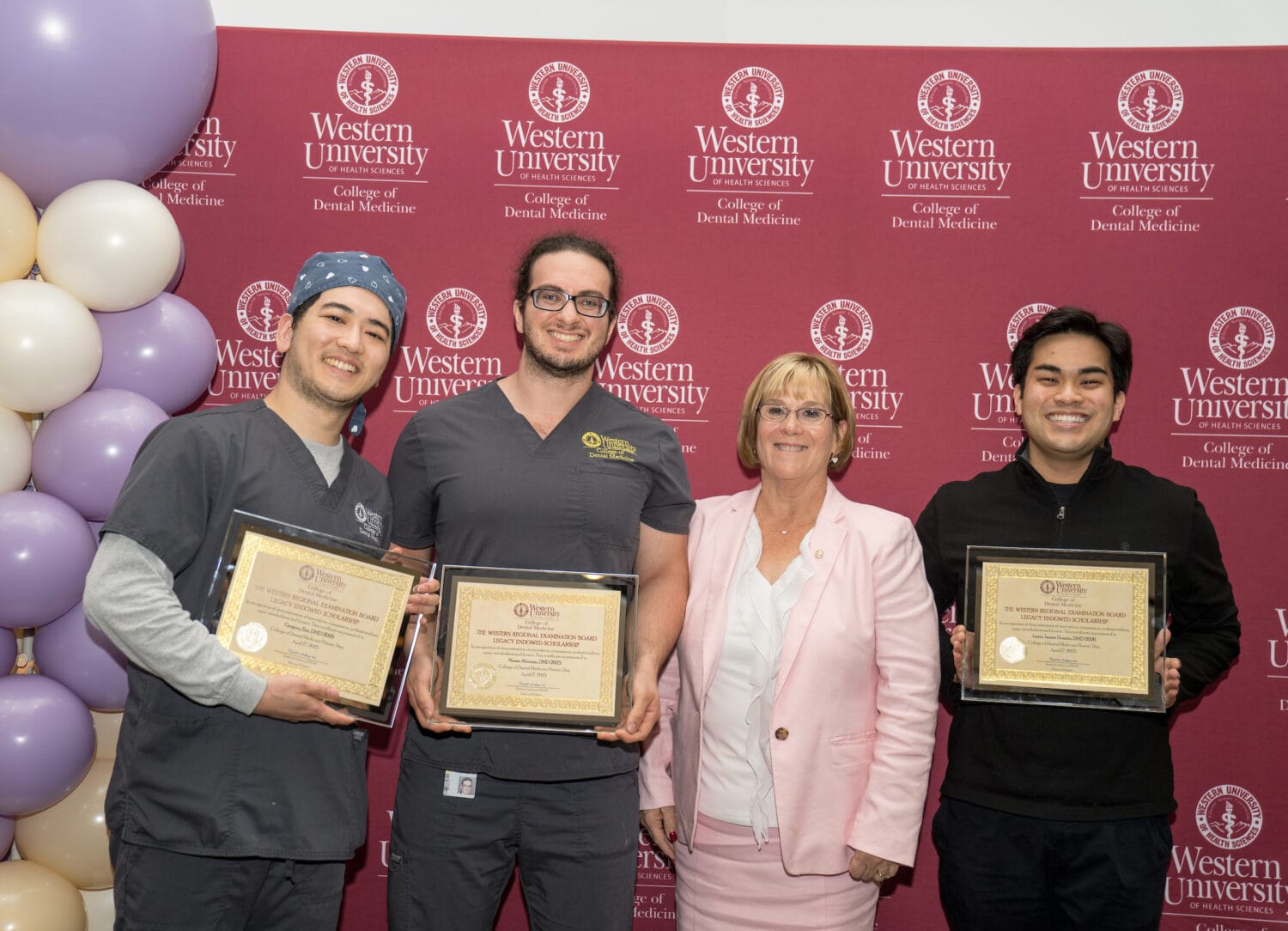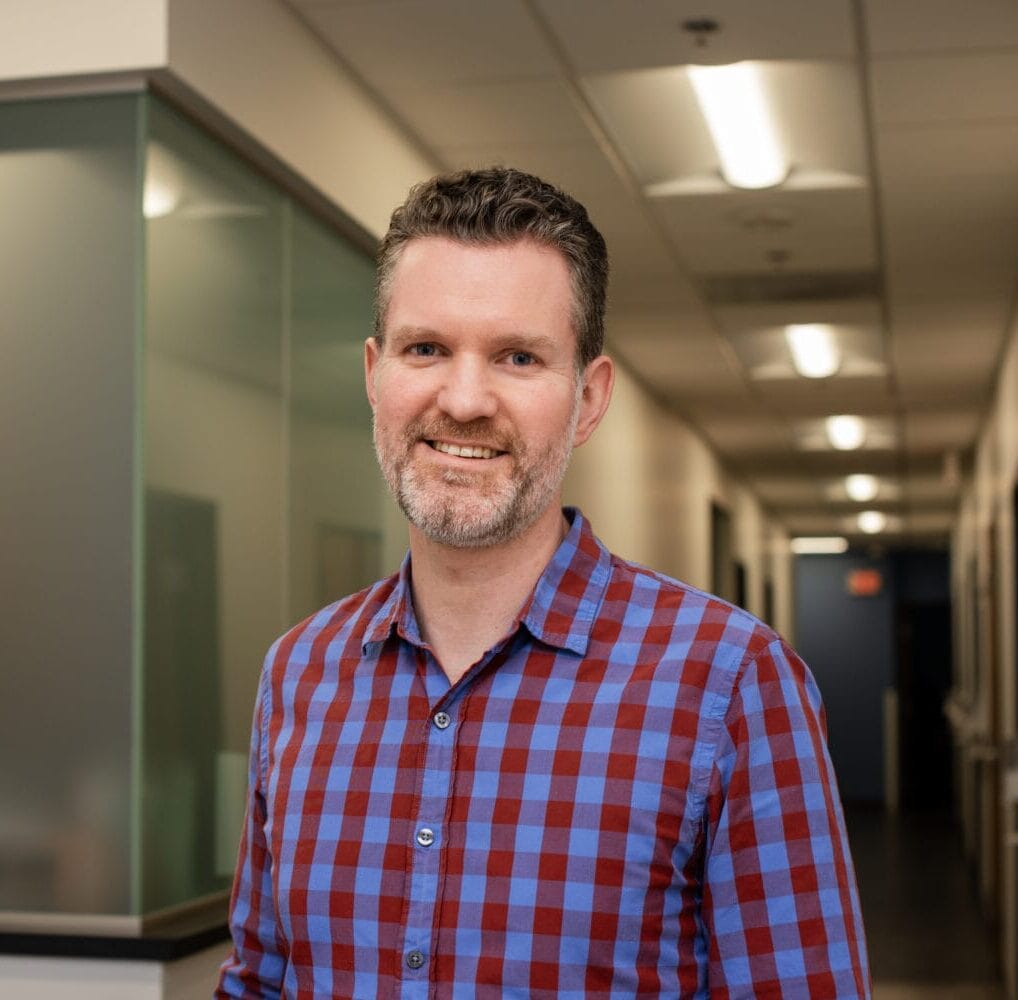'You've picked a good profession,' J&J V.P. tells lecture audience
Health care will continue to be a growing part of the U.S. economy thanks to the provisions of the Affordable Care Act, new emphasis on wellness and preventative care, and the twin forces of an aging population and chronic disease, according to the featured speaker at the fourth annual Dr. Philip Pumerantz Distinguished Lectureship.
Cliff Holland, Corporate Vice President for Worldwide Government Affairs and Policy for the health care and pharmaceuticals giant Johnson & Johnson, told a standing room-only crowd at WesternU’s Health Education Center that although “a healthy population is a wealthy population,” health care will continue to be a growth industry in the United States as the baby boom generation ages and chronic conditions – including obesity – remain prevalent.
Holland was the keynote speaker for the lectureship, which was established in 2009 in honor of WesternU President Philip Pumerantz, PhD, through a donation from Drs. Elaine and Daljit Sarkaria of Orange. Between the at-capacity lecture hall where Holland spoke and the crowd overflow room in the floor below, more than 450 people were in attendance. Another 100-plus tuned in via webcast from WesternU’s COMP-Northwest campus in Lebanon, Oregon.
WesternU’s motto, “The discipline of learning. The art of caring,” links the University’s mission with Johnson & Johnson’s, Holland noted. “Those you serve, you’re going to put first,” he said. “Our whole genesis of being was to care for people around the world,” which the company has been doing for 128 years, he added.
Abundant challenges remain in carrying out the two organizations’ missions, he continued. “Aging populations and chronic disease are two things we see everywhere, and governments are looking at how to deal with (them),” he said. He made particular note of obesity, citing a statistic that two out of three Americans is either overweight or obese – and children are not exempt.
“Obesity in youth is the tragedy of our time,” Holland said.
Health-care’s organization infrastructure and culture also need to change to be more effective, according to Holland. How doctors and hospitals and reimbursed for the care they provide; the degree and efficacy of care coordination among patient providers; and implementation of a comprehensive electronic medical records system earned special mention during his presentation.
Holland offered four general solutions to the challenges facing health care, including:
1. Prevention and wellness: Infection prevention, screening, disease management, and employee programs. Johnson & Johnson offers employees a $500 reduction in their health insurance costs if they fill out a health profile that helps the company match them with wellness and prevention programs. Since its implementation 20 years ago, employee smoking is down 66 percent, high blood pressure is down 57 percent, and cholesterol is down 68 percent.
2. Reducing waste, which costs the health care system hundreds of billions of dollars annually.
3. Innovation, especially innovations that lower the costs of medical procedures. “Innovation in the U.S. is a really, really important aspect of health care’s future,” Holland said.
4. Partnering for success – programs aimed at improving public health, including smoking cessation and child and maternal health.
Finally, while some consider the growth in the U.S. health care system as a problem, Holland believes it’s more the result of the changing nature of the population, more attention being paid to health, and more care being needed overall.
“One in eight Americans is involved in health care,” he said. “There’s $49 billion in health care research and development in the U.S. each year. Three million new jobs since 2000.
“You’ve picked a great profession, because there’s nothing more special than caring for people. It’s also a great profession because there’s going to be more and more demand.”
Prior to Holland’s presentation, Dr. Pumerantz welcomed the crowd and briefly reminisced about the opening of the College of Osteopathic Medicine of the Pacific – WesternU’s flagship college – 35 years ago this month.
Now, as then, the mission remains the same, he said. “Our job is to take care of people, regardless of everything else.”
Following Holland’s talk, Dr. Pumerantz joined Thomas G. Fox, PhD, WesternU’s senior vice president and the emcee for the lecture, and Stephanie Bowlin, EdD, PA, dean of the College of Allied Health Professions, on stage to present Holland with a certificate of appreciation and to unveil the lectureship plaque, which each year has the name of the latest speaker added to it.
Holland’s name follows those of Dr. John Kitzhaber, governor of Oregon, who spoke at the inaugural Pumerantz Lecture in 2009; Kimberly Belshe, former secretary of health and human services for the state of California, who was the 2010 speaker; and Robert Margolis, MD, former managing partner and CEO of HealthCare Partners, who made the keynote address in 2011.
Earlier in the evening, Holland met with a small group of students and student government leaders for a private discussion about the future of health care.



